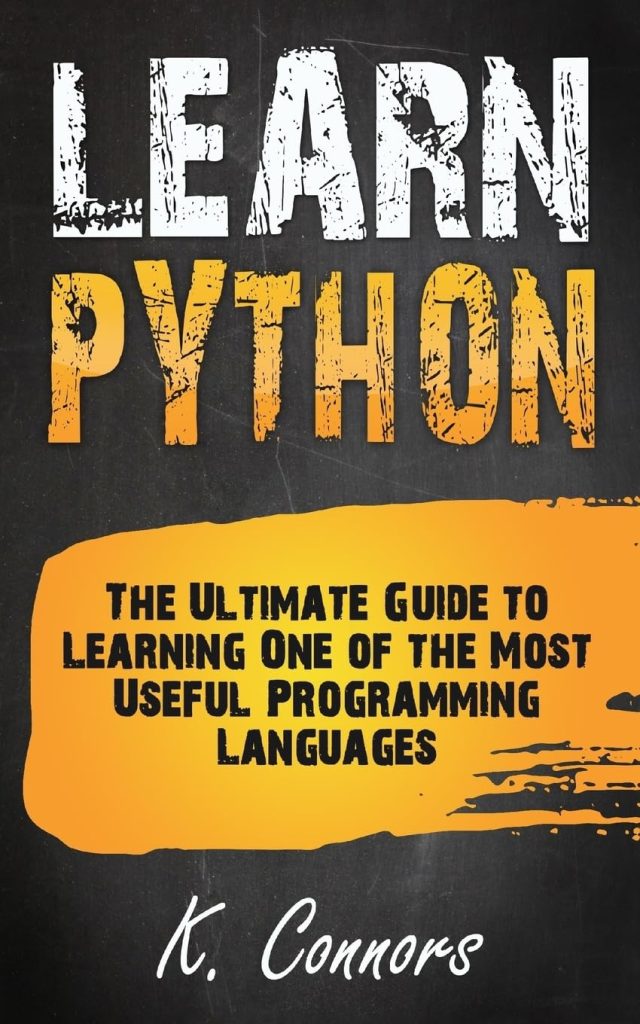
Decision Trees are a type of supervised learning algorithm used for both classification and regression tasks. They operate by recursively partitioning the input space into smaller regions, creating a tree-like structure of decisions. Each internal node in the tree represents a test on an input feature, and the branches represent the possible outcomes of that test. The leaf nodes represent the final predictions or decisions made by the tree.
The key idea behind Decision Trees is to find the most informative features and their corresponding thresholds that best separate the data into distinct classes or values. That’s achieved through a process called recursive partitioning, where the algorithm iteratively splits the data based on the feature that provides the most information gain or reduction in impurity.
There are several algorithms for constructing Decision Trees, such as ID3, C4.5, and CART (Classification and Regression Trees). While they differ in their specific implementation details, they generally follow the same principles:
- Start with the entire dataset as the root node.
- Evaluate all possible split points for each feature and choose the one that maximizes the information gain or minimizes the impurity.
- Split the data based on the chosen feature and create child nodes.
- Recursively repeat the process on each child node until a stopping criterion is met (e.g., maximum depth, minimum number of samples, or pure nodes).
Decision Trees have several advantages, including their interpretability, ability to handle both numerical and categorical data, and robustness to irrelevant features. However, they can also suffer from overfitting, instability (small changes in the data can lead to very different trees), and bias towards features with many levels.
from sklearn.tree import DecisionTreeClassifier # Create a Decision Tree classifier tree = DecisionTreeClassifier() # Train the model tree.fit(X_train, y_train) # Make predictions y_pred = tree.predict(X_test)
The above code demonstrates how to create a Decision Tree classifier using scikit-learn and train it on a dataset. The DecisionTreeClassifier class is imported from the sklearn.tree module, and an instance is created. The fit method is used to train the model on the training data X_train and y_train. Once trained, the predict method can be used to make predictions on new data X_test.
Implementing Decision Trees in scikit-learn
The scikit-learn library provides a simple and efficient implementation of Decision Trees through the DecisionTreeClassifier and DecisionTreeRegressor classes. These classes offer a wide range of parameters to control the behavior of the tree and prevent overfitting.
To create a Decision Tree classifier in scikit-learn, you can use the following code:
from sklearn.tree import DecisionTreeClassifier # Create a Decision Tree classifier tree = DecisionTreeClassifier(criterion='gini', max_depth=None, min_samples_split=2, min_samples_leaf=1, max_features=None, random_state=42) # Train the model tree.fit(X_train, y_train) # Make predictions y_pred = tree.predict(X_test)
Here’s a breakdown of the key parameters used in the DecisionTreeClassifier:
- The function to measure the quality of a split. For classification tasks, you can use
'gini'(for the Gini impurity) or'entropy'(for information gain). - The maximum depth of the tree. Setting it to
Noneallows the tree to grow until all leaves are pure. - The minimum number of samples required to split an internal node.
- The minimum number of samples required to be at a leaf node.
- The number of features to think when looking for the best split.
- The seed used by the random number generator for reproducibility.
For regression tasks, you can use the DecisionTreeRegressor class, which has similar parameters but uses different criteria for splitting, such as 'mse' (mean squared error) or 'mae' (mean absolute error).
Once the Decision Tree model is trained, you can use the predict method to make predictions on new data. Additionally, scikit-learn provides methods like predict_proba to estimate the probability of each class, and apply to apply a function to each leaf of the tree.
Note: Decision Trees can be prone to overfitting, especially when the tree is allowed to grow deep. To prevent this, you can use techniques like setting a maximum depth, increasing the minimum number of samples required for splitting, or using ensemble methods like Random Forests (which will be covered in the next section).
Fine-tuning Decision Trees with Hyperparameter Tuning
Decision Trees can be fine-tuned using hyperparameter tuning to improve their performance and prevent overfitting. Scikit-learn provides various hyperparameters that can be adjusted to control the behavior of the Decision Tree models. Here are some commonly tuned hyperparameters:
- This parameter specifies the maximum depth of the tree. Limiting the depth can help prevent overfitting by restricting the tree from growing too complex. A smaller value for max_depth will result in a shallower tree, potentially leading to underfitting, while a larger value may cause overfitting.
- This parameter determines the minimum number of samples required to split an internal node. Increasing this value can prevent overfitting by preventing the tree from splitting nodes with too few samples.
- This parameter specifies the minimum number of samples required to be at a leaf node. Increasing this value can help prevent overfitting by preventing the tree from creating too many leaf nodes with very few samples.
- This parameter controls the number of features to consider when looking for the best split. For classification tasks, a common practice is to set max_features to the square root of the total number of features. For regression tasks, a typical value is the total number of features divided by 3.
- This parameter determines the metric used to measure the quality of a split. For classification tasks, ‘gini’ (Gini impurity) and ‘entropy’ (information gain) are common choices. For regression tasks, ‘mse’ (mean squared error) and ‘mae’ (mean absolute error) are typically used.
To perform hyperparameter tuning, you can use techniques like grid search or randomized search. Grid search exhaustively searches over a specified grid of hyperparameter values, while randomized search randomly samples from a distribution of hyperparameter values. Here’s an example of how to perform grid search for a Decision Tree classifier using scikit-learn:
from sklearn.tree import DecisionTreeClassifier
from sklearn.model_selection import GridSearchCV
# Define the parameter grid
param_grid = {
'max_depth': [3, 5, 7, None],
'min_samples_split': [2, 5, 10],
'min_samples_leaf': [1, 2, 4],
'max_features': ['sqrt', 'log2', None]
}
# Create a Decision Tree classifier
tree = DecisionTreeClassifier()
# Perform grid search
grid_search = GridSearchCV(estimator=tree, param_grid=param_grid, cv=5, scoring='accuracy', n_jobs=-1)
grid_search.fit(X_train, y_train)
# Get the best hyperparameters
best_params = grid_search.best_params_
print(f"Best hyperparameters: {best_params}")
# Get the best model
best_model = grid_search.best_estimator_
In this example, we define a parameter grid with different values for max_depth, min_samples_split, min_samples_leaf, and max_features. We then create a GridSearchCV object, passing in the Decision Tree classifier, the parameter grid, the number of folds for cross-validation (cv=5), the scoring metric (‘accuracy’), and n_jobs=-1 to use all available CPU cores. After fitting the grid search object on the training data, we can access the best hyperparameters and the best model.
Hyperparameter tuning is an essential step in optimizing the performance of Decision Trees and preventing overfitting or underfitting. By carefully selecting the appropriate hyperparameter values, you can improve the model’s accuracy, generalization, and interpretability.
Introduction to Random Forests
Random Forests are an ensemble learning method that combines multiple Decision Trees to improve predictive performance and reduce overfitting. The core idea behind Random Forests is to construct a large number of individual Decision Trees, each trained on a random subset of the training data and features. The final prediction is obtained by aggregating the predictions of all the individual trees.
Random Forests work by introducing randomness in two ways:
- For each tree in the ensemble, a random subset of the training data is sampled with replacement (known as bootstrapping). This means that some observations may be repeated, while others may be left out. Each tree is then trained on this bootstrap sample.
- When splitting each node in a Decision Tree, instead of considering all available features, a random subset of features is selected. This subset of features is used to find the best split for that node.
By combining these two sources of randomness, Random Forests create a diverse ensemble of Decision Trees, each with slightly different characteristics. This diversity helps to reduce the variance of the individual trees and mitigate the risk of overfitting.
The key advantages of Random Forests include:
- Random Forests generally have higher predictive accuracy compared to individual Decision Trees, especially when dealing with complex or noisy datasets.
- The ensemble approach and feature randomness help to reduce the risk of overfitting, making Random Forests more robust to noise and outliers.
- Random Forests can provide an estimate of the importance of each feature in the dataset, which can be useful for feature selection and interpretation.
- Random Forests can handle datasets with missing values by using a technique called “proximity-based imputation,” which estimates missing values based on the similarity between observations.
Despite their advantages, Random Forests can still be affected by factors such as the choice of hyperparameters (e.g., the number of trees, the maximum depth of each tree, and the number of features to consider at each split) and the quality of the input data. Proper hyperparameter tuning and data preprocessing are essential for obtaining optimal performance from Random Forests.
Building Random Forests in scikit-learn
Building Random Forests in scikit-learn is simpler and similar to creating Decision Trees. The RandomForestClassifier and RandomForestRegressor classes in scikit-learn provide an efficient implementation of Random Forests for classification and regression tasks, respectively.
Here’s an example of how to create a Random Forest classifier in scikit-learn:
from sklearn.ensemble import RandomForestClassifier # Create a Random Forest classifier rf = RandomForestClassifier(n_estimators=100, max_depth=None, min_samples_split=2, min_samples_leaf=1, max_features='sqrt', random_state=42) # Train the model rf.fit(X_train, y_train) # Make predictions y_pred = rf.predict(X_test)
Here’s a breakdown of the key parameters used in the RandomForestClassifier:
- The number of trees in the forest.
- The maximum depth of each tree. Setting it to None allows the trees to grow until all leaves are pure.
- The minimum number of samples required to split an internal node.
- The minimum number of samples required to be at a leaf node.
- The number of features to consider when looking for the best split. You can specify an integer value or use ‘sqrt’ (square root of the total number of features) or ‘log2’ (logarithm of the total number of features).
- The seed used by the random number generator for reproducibility.
For regression tasks, you can use the RandomForestRegressor class, which has similar parameters but different criteria for splitting, such as ‘mse’ (mean squared error) or ‘mae’ (mean absolute error).
Once the Random Forest model is trained, you can use the predict method to make predictions on new data. Additionally, scikit-learn provides methods like predict_proba to estimate the probability of each class and apply to apply a function to each tree in the ensemble.
Random Forests are often more robust to overfitting compared to individual Decision Trees, but they can still benefit from hyperparameter tuning. You can use techniques like grid search or randomized search to find the optimal combination of hyperparameters for your specific dataset and problem.
Evaluating Model Performance
Evaluating the performance of your machine learning models especially important to understand their effectiveness and make informed decisions. In scikit-learn, there are several metrics and tools available to evaluate the performance of Decision Trees and Random Forests.
Classification Metrics
For classification tasks, common metrics include accuracy, precision, recall, and F1-score. These metrics can be computed using scikit-learn’s metrics module:
from sklearn.metrics import accuracy_score, precision_score, recall_score, f1_score # Compute accuracy accuracy = accuracy_score(y_true, y_pred) # Compute precision precision = precision_score(y_true, y_pred, average='macro') # Compute recall recall = recall_score(y_true, y_pred, average='macro') # Compute F1-score f1 = f1_score(y_true, y_pred, average='macro')
Additionally, you can generate a classification report, which provides a summary of the main classification metrics:
from sklearn.metrics import classification_report report = classification_report(y_true, y_pred) print(report)
Regression Metrics
For regression tasks, common metrics include mean squared error (MSE), mean absolute error (MAE), and R-squared (R²). These metrics can be computed using scikit-learn’s metrics module:
from sklearn.metrics import mean_squared_error, mean_absolute_error, r2_score # Compute mean squared error mse = mean_squared_error(y_true, y_pred) # Compute mean absolute error mae = mean_absolute_error(y_true, y_pred) # Compute R-squared r2 = r2_score(y_true, y_pred)
Cross-Validation
To obtain a more reliable estimate of a model’s performance, it is recommended to use cross-validation techniques. Scikit-learn provides the cross_val_score function, which allows you to evaluate a model using different cross-validation strategies (e.g., k-fold, leave-one-out, or stratified k-fold).
from sklearn.model_selection import cross_val_score
# Perform 5-fold cross-validation
scores = cross_val_score(model, X, y, cv=5, scoring='accuracy')
# Print the mean and standard deviation of the scores
print(f"Mean accuracy: {scores.mean():.3f} (+/- {scores.std():.3f})")
Feature Importance
Both Decision Trees and Random Forests provide a way to estimate the importance of each feature in the dataset. This information can be useful for feature selection and interpretation.
import matplotlib.pyplot as plt
# Get feature importances
importances = model.feature_importances_
# Plot feature importances
plt.figure(figsize=(10, 6))
plt.bar(range(X.shape[1]), importances)
plt.xticks(range(X.shape[1]), X.columns, rotation=90)
plt.xlabel('Feature')
plt.ylabel('Importance')
plt.show()
By evaluating the performance of your models using appropriate metrics and cross-validation techniques, you can gain insights into their strengths and weaknesses, and make informed decisions about which model to use or how to improve its performance.
Conclusion and Further Reading
Decision Trees and Random Forests are powerful machine learning algorithms with a wide range of applications in various domains. While Decision Trees provide interpretability and ease of understanding, Random Forests offer improved accuracy and robustness to overfitting through their ensemble approach.
In this article, we explored the fundamental concepts behind Decision Trees and Random Forests, and demonstrated how to implement them using the scikit-learn library in Python. We covered the key steps involved, including data preprocessing, model training, hyperparameter tuning, and performance evaluation.
While Decision Trees and Random Forests are excellent algorithms, it’s important to note that they may not be the best choice for every problem. Other algorithms, such as Support Vector Machines, Gradient Boosting, or Neural Networks, may perform better depending on the specific characteristics of the dataset and the problem at hand.
To further enhance your understanding and skills in Decision Trees and Random Forests, here are some recommended resources for further reading:
- Books:
- “An Introduction to Statistical Learning” by Gareth James, Daniela Witten, Trevor Hastie, and Robert Tibshirani
- “Pattern Recognition and Machine Learning” by Christopher M. Bishop
- Online Resources:
As you continue exploring these algorithms, remember to experiment with different datasets, tune hyperparameters, and evaluate model performance using appropriate metrics. Additionally, ponder combining Decision Trees and Random Forests with other techniques, such as feature selection or ensemble methods, to further improve their performance.
Ultimately, mastering Decision Trees and Random Forests will not only enhance your machine learning skills but also provide you with powerful tools for solving complex problems across various domains.






